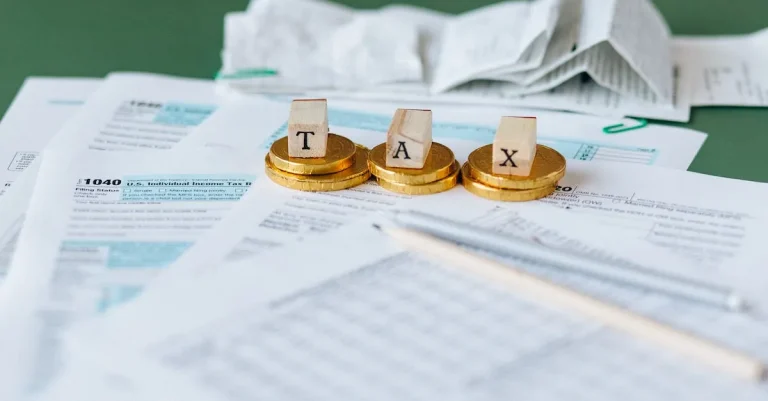What Is The Audit Number On A Texas Driver’S License?
When you receive your Texas driver’s license, you may notice a mysterious audit number printed on it. But what exactly is this audit number, and what purpose does it serve? This question often puzzles Texas drivers.
If you’re short on time, here’s a quick answer: The audit number on a Texas driver’s license is a unique identifier used to validate and track the license in the Texas DMV system.
In this comprehensive guide, we’ll explain what the audit number is, how it is generated, and how the Texas Department of Public Safety uses it to manage driver’s licenses. We’ll also cover topics like reading your audit number, looking up license data with the audit number, and more. Whether you’re simply curious or want to verify your driving record, read on to learn all about Texas license audit numbers.
What Is the Audit Number on a Texas License?
When you look at your Texas driver’s license, you may notice a unique number printed on it called the “Audit Number.” This number is an important identifier that the Texas Department of Public Safety (DPS) uses to track and manage driver’s license records.
The Audit Number is a 20-digit code that is randomly generated and assigned to each individual driver’s license issued in Texas. It serves as a unique identifier for your license and is used for various administrative and security purposes.
What Does the Audit Number Represent?
The Audit Number on your Texas driver’s license does not contain any personal information about you. It is simply a unique identifier that helps the DPS maintain accurate records and prevent fraud.
Each digit in the Audit Number has a specific meaning, but it does not directly correspond to any personal information. For security reasons, the exact algorithm used to generate the Audit Number is not disclosed to the public.
Why Is the Audit Number Important?
The Audit Number plays a crucial role in various processes related to your driver’s license. Here are a few reasons why it is important:
- Record Keeping: The DPS uses the Audit Number to track and manage driver’s license records. It helps keep accurate records of license holders, including any changes or updates to their information.
- Identification and Verification: The Audit Number is used by law enforcement officers and other officials to verify the authenticity of a driver’s license. It helps ensure that the license is valid and belongs to the person presenting it.
- Preventing Fraud: The Audit Number is designed to make it difficult for individuals to create counterfeit licenses or use someone else’s license illegally. The random generation of the number makes it harder for fraudsters to predict or replicate.
Where Can You Find the Audit Number?
The Audit Number is typically located on the front of your Texas driver’s license, usually near the bottom of the card. It is printed in a smaller font size and is often labeled as “AUDIT NO” or “AUDIT NUMBER.”
If you are unsure where to find the Audit Number on your license, you can refer to the official DPS website for a visual guide or contact the DPS directly for assistance.
Remember, the Audit Number is an important piece of information linked to your driver’s license, so it is crucial to keep it secure and not share it with anyone unless required by a legitimate authority.
For more information about Texas driver’s licenses and related topics, you can visit the official Texas DPS website at https://www.dps.texas.gov/.
How the Audit Number Is Generated
The audit number on a Texas driver’s license is a unique identifier that is generated using a specific algorithm. This number is used to verify the authenticity of the license and helps to prevent fraud.
Random Number Generation
The audit number is generated using a complex algorithm that involves a combination of letters, numbers, and symbols. This algorithm ensures that each audit number is unique and cannot be easily replicated or guessed.
The randomness of the audit number provides an additional layer of security to the driver’s license.
Verification Process
When a driver’s license is issued, the audit number is generated and printed on the license. This number can be used by law enforcement officers and other relevant authorities to verify the validity of the license.
By comparing the audit number on the license with the corresponding record in the database, they can confirm that the license is genuine and has not been tampered with.
Preventing Fraud
The use of the audit number helps to prevent fraud by making it difficult for individuals to create fake driver’s licenses. Since the algorithm used to generate the audit number is known only to the issuing authority, it is challenging for counterfeiters to replicate the number accurately.
In addition to the audit number, Texas driver’s licenses also include other security features such as holograms, microprinting, and UV ink. These features further enhance the security of the license and make it easier to detect counterfeit documents.
For more information about the audit number on a Texas driver’s license, you can visit the official website of the Texas Department of Public Safety: https://www.dps.texas.gov/DriverLicense/auditnumber.htm.
Purposes and Uses of the Audit Number
The audit number on a Texas driver’s license serves several important purposes and is used in various situations. Here are some of the key uses of the audit number:
License Tracking and Verification
The audit number is a unique identifier assigned to each driver’s license issued in Texas. It is used by the Department of Public Safety (DPS) to track and verify the authenticity of driver’s licenses.
When you apply for a driver’s license or renew your existing one, the audit number helps the DPS ensure that your license is valid and has not been tampered with.
The audit number also plays a crucial role in preventing identity theft and fraudulent activities. By cross-referencing the audit number with other personal information, the DPS can verify your identity and ensure that you are the rightful owner of the license.
Driving Records and History
The audit number is closely tied to your driving records and history. It is used to keep track of your traffic violations, accidents, and any other relevant information related to your driving activities.
This information is crucial for insurance companies, employers, and other entities that may need to assess your driving record.
When you provide your audit number, it allows these entities to access your driving records and make informed decisions based on your driving history. For example, insurance companies may use the audit number to determine your insurance rates, while employers may use it to assess your suitability for certain job positions that require driving.
Law Enforcement Identification
In addition to tracking and verifying licenses, the audit number is also used by law enforcement agencies for identification purposes. When you are pulled over by a police officer, they may ask for your driver’s license and specifically request the audit number.
This helps the officer quickly access your information and verify your identity.
The audit number is especially important in situations where there may be multiple individuals with the same name or similar personal information. By providing the audit number, you help law enforcement officials accurately identify you and avoid any confusion that may arise due to shared personal details.
Reading and Interpreting Your Audit Number
When looking at your Texas driver’s license, you may notice a series of numbers labeled as the “Audit Number.” This number serves as a unique identifier for your license and contains important information about its issuance.
Number Format
The Audit Number on a Texas driver’s license is a 20-digit number that is typically found on the front or back of the license. It is designed to be easily readable and distinguishable from other numbers on the license.
The number is divided into four sections, with each section serving a specific purpose. The first three digits represent the county where the license was issued. The next two digits indicate the year of issuance. The following two digits represent the month of issuance.
Finally, the remaining 13 digits are randomly generated and unique to each license.
Issue Date
By looking at the Audit Number, you can determine the approximate issue date of your Texas driver’s license. The two digits indicating the year of issuance can help you identify when your license was issued.
For example, if the second and third digits are “21,” it means your license was issued in the year 2021.
Knowing the issue date of your license can be helpful for various reasons. It can assist you in determining when your license will expire and when you may need to renew it. Additionally, it can be useful for record-keeping purposes or when providing proof of identification.
Driver’s License Number
While the Audit Number is unique to each license, it is distinct from the actual driver’s license number. The driver’s license number is typically located near the top of the license and is used by law enforcement and other agencies to identify individuals.
It is important to note that the Audit Number should not be used as a substitute for the driver’s license number when providing identification.
If you have any further questions or concerns regarding your Texas driver’s license or the information contained within the Audit Number, it is recommended to reach out to the Texas Department of Public Safety (DPS) for clarification.
They can provide accurate and up-to-date information regarding your license and its various components.
Looking Up Your Driving Record Using the Audit Number
When it comes to driving records, the audit number is an important piece of information. The audit number is a unique identifier that is assigned to each driver’s license issued in the state of Texas. This number is used to track and retrieve a driver’s complete driving history and records, including any traffic violations, accidents, and license suspensions.
It is essential for both the individual driver and law enforcement agencies to have access to this information for various purposes.
Why is the Audit Number Important?
The audit number plays a crucial role in accurately identifying and retrieving a driver’s records. When you need to obtain your driving record for employment purposes, insurance purposes, or simply to review your own driving history, the audit number is required to access the information.
It ensures that the correct records are retrieved and eliminates any confusion or mix-ups with other individuals who may have similar names or other identifying information.
How to Find the Audit Number on Your Texas Driver’s License?
The audit number can be found on the front of your Texas driver’s license card. It is typically a 20-digit number that is located at the top right corner of the card. The number is unique to each driver and cannot be altered or changed.
It is recommended to make a note of your audit number and keep it in a safe place, as you may need it in the future to access your driving records.
Using the Audit Number to Look Up Your Driving Record
There are several ways to look up your driving record using the audit number. One option is to visit the official website of the Texas Department of Public Safety (DPS) and navigate to the driver’s license section.
From there, you can enter your audit number and other required information to retrieve your driving record. Another option is to visit a local DPS office and request a copy of your driving record in person.
It is important to note that there may be a fee associated with obtaining your driving record, depending on the method you choose. Additionally, certain restrictions and requirements may apply, so it is advisable to check the official DPS website or contact a local DPS office for more information.
Remember, your driving record is a valuable document that reflects your driving history and can have an impact on various aspects of your life. Keeping track of your audit number and periodically reviewing your driving record can help you stay informed and ensure that the information is accurate and up to date.
Frequently Asked Questions
Can the Audit Number Change?
The Audit Number on a Texas Driver’s License is a unique identifier assigned to each individual license holder. This number is generated by the Texas Department of Public Safety (DPS) and is used for various purposes, including tracking driver’s license transactions and verifying the authenticity of the license.
The Audit Number is generally assigned when a new license is issued and remains the same throughout the duration of the license. However, in some cases, such as when a license is lost or stolen, the DPS may issue a new license with a different Audit Number.
Is the Audit Number Unique?
Yes, the Audit Number on a Texas Driver’s License is unique to each individual license holder. This number is generated using a specific algorithm that ensures its uniqueness. The Audit Number is a 20-digit alphanumeric code that contains information about the license holder, such as the date of birth and gender.
It is important to note that the Audit Number should not be confused with the driver’s license number, which is a separate identifier.
What If I Lost My Audit Number?
If you have lost your Audit Number, don’t worry! You can still obtain a duplicate driver’s license from the Texas DPS. All you need to do is visit the DPS website or schedule an appointment at a local DPS office to request a duplicate license.
You will need to provide some personal information, such as your name, date of birth, and driver’s license number, to verify your identity. Once your identity is confirmed, the DPS will issue a new license with a new Audit Number.
For more information on how to obtain a duplicate driver’s license, you can visit the official Texas DPS website: https://www.dps.texas.gov/DriverLicense/duplicateLicense.htm
Conclusion
In summary, the audit number on your Texas driver’s license serves as an important identification code and tracking mechanism for the DMV. It is generated using your personal information and driver’s license number when the license is issued.
While you normally don’t need to reference your audit number yourself, it allows the Texas DPS to validate identities and driving records reliably behind the scenes. So next time you take a look at your license, you’ll know the story behind the audit number!
We hope this overview gave you a better understanding of Texas driver’s license audit numbers. Let us know if you have any other questions!








